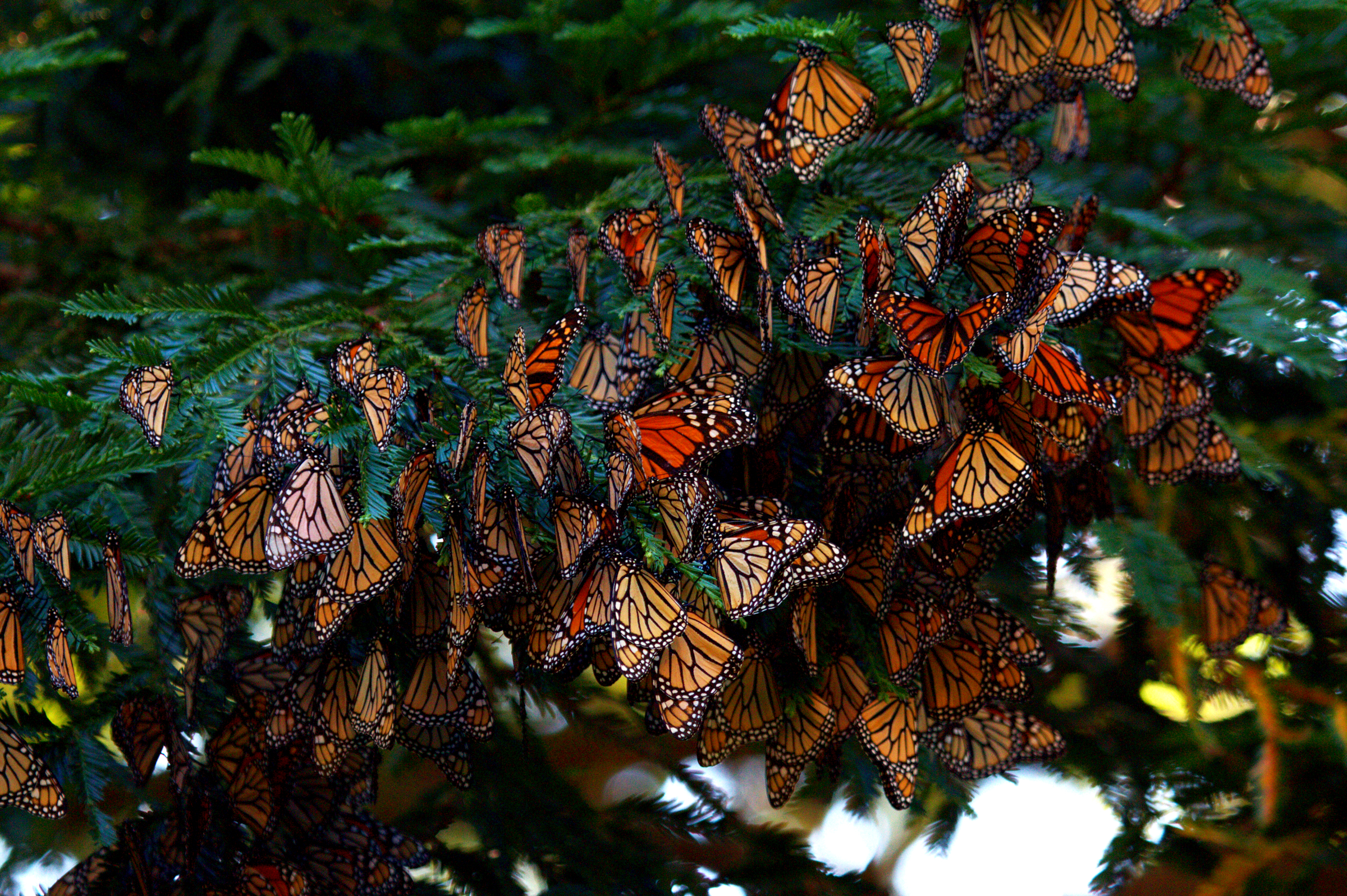 A newly completed assessment has found that monarch butterflies in North America are vulnerable to extinction. The assessment was undertaken by NatureServe and The Xerces Society for Invertebrate Conservation, and results were published in a report issued yesterday by the U.S. Forest Service.
A newly completed assessment has found that monarch butterflies in North America are vulnerable to extinction. The assessment was undertaken by NatureServe and The Xerces Society for Invertebrate Conservation, and results were published in a report issued yesterday by the U.S. Forest Service.
NatureServe and the Xerces Society used NatureServe’s conservation status assessment methodology to determine the monarch’s level of imperilment, methodology that has been used to assess hundreds of other animal species. The team of NatureServe and Xerces Society scientists, using data on population abundance, trends, and threats, determined that while the monarch butterfly (Danaus plexippus) appears to be secure on a global level, the subspecies in North America, Danaus plexippus plexippus, is vulnerable to extinction.
This analysis divided North American monarchs into an eastern population that migrates to central Mexico each autumn from as far north as southern Canada and a smaller western population that largely migrates to coastal California to spend the winter. The eastern population, decimated by recent declines and widespread threats, are now “critically imperiled,” according to the report. The western population, with a slightly slower rate of decline and less widespread threats, was categorized as “vulnerable to imperiled.”
“Our findings show that even a widespread and common insect can face dramatic population declines in an alarmingly short period of time,” said Bruce Young, NatureServe’s director of species science. “The time is now to intensify continent-wide efforts to reduce the threats to this iconic species and prevent it from succumbing to the fate that has befallen far too many other species.”
The assessment was done as part of a report prepared for the U.S. Forest Service. The report, Conservation Status and Ecology of the Monarch Butterfly in the United States, summarizes the monarch’s North American distribution, life history, population, current conservation status, and potential causes of decline. The authors also offer guidance for how to better manage breeding and overwintering habitats. This report aims to inform government agencies charged with biodiversity protection—as well as conservation organizations and the public in general—about the threats to and the conservation status of this much-loved, iconic insect.
“The conclusions of this assessment are consistent with the widespread reports that the monarch population has declined,” said Sarina Jepsen, endangered species director at the Xerces Society. “We now need to restore vast areas of the landscape with milkweed—the monarch butterfly’s essential host plant—and nectar plants if we hope to save this spectacular migration.”
Click here to read about Xerces’ Monarch Conservation Campaign, including efforts to conserve overwintering sites in California and restore breeding habitat in key regions of the United States.
Media Contacts
- Sarina Jepsen - Endangered Species Program Director, Xerces Society for Invertebrate Conservation; (971) 244-3727, sarina@xerces.org
- Bruce Young - Director of Species Science, NatureServe; (703) 908-1805, bruce_young@natureserve.org
The Xerces Society for Invertebrate Conservation - Protecting the Life that Sustains Us
The Xerces Society is a nonprofit organization that protects wildlife through the conservation of invertebrates and their habitat. Since 1971, the Society has been at the forefront of invertebrate protection, harnessing the knowledge of scientists and the enthusiasm of citizens to implement conservation programs worldwide. To learn more about our work or to donate to the Society, please visit www.xerces.org.
NatureServe - A Network Connecting Science with Conservation
NatureServe is a non-profit organization that provides high-quality scientific expertise for conservation. Our dynamic and impactful data, tools, and resources help guide conservation action where it’s needed most. We envision a world where decision-makers fully understand the importance of science in identifying and protecting our precious animals, plants, and ecosystems.